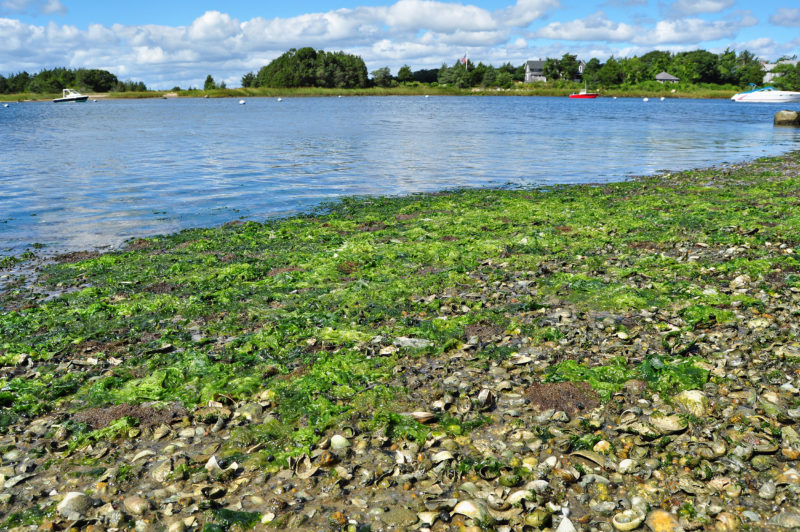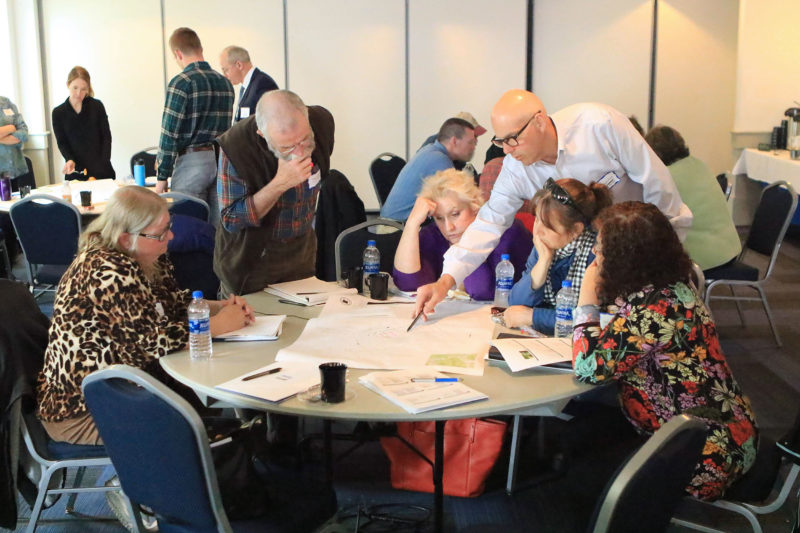Decision Makers Workshops present solutions to reduce nitrogen pollution and protect wetlands
A total of 65 town officials and industry professionals from around Buzzards Bay gathered this month for the Coalition-sponsored Decision Makers Workshops. These two free workshops focused on new wastewater systems that can reduce nitrogen pollution, and on how conservation commissions can protect the Bay’s important wetlands.
In both workshops, presenters provided real-world solutions for the people whose daily work affects the health of our local environment. These projects provide models that participants can emulate in their own work, crowd-sourcing the solutions we can put in place as a community to protect Buzzards Bay.

Nitrogen pollution fuels the growth of algae, which can wash up on beaches as slimy green muck.
At the first workshop on May 2, industry professionals learned about new technologies that can remove nitrogen from wastewater. Septic systems are the biggest source of nitrogen pollution to Buzzards Bay. Nitrogen pollution leads to clouded waters, blooms of algae, and the loss of fish and shellfish. The Coalition is working to promote and install various wastewater technologies around Buzzards Bay to reduce the impacts of nitrogen pollution on the Bay’s health.
Workshop presentations focused on technologies that can be used in areas where houses can’t connect to a centralized sewer system. The Coalition partnered with the Massachusetts Alternative Septic System Test Center, which identified technologies with a record of strong performance and those with promise. Participants learned about the operation, maintenance, and performance of three small treatment facility technologies and several different septic systems that are now being used throughout the region to reduce nitrogen pollution.
Participants included representatives from six Buzzards Bay towns, eight private wastewater companies, the Massachusetts Department of Environmental Protection, and the U.S. EPA. They were not only introduced to the latest wastewater treatment technology and science, but they also received continuing education credit toward industry licenses.
The workshop concluded with a tour of the West Island wastewater treatment facility in Fairhaven. This compact wastewater treatment facility, which treats for both nitrogen and bacteria, has contributed to reduced nitrogen pollution in Nasketucket Bay, according to the Coalition’s long-term Bay Health data.

Workshop participants at the wetlands workshop discuss practical guidelines to writing more effective permits.
At the second workshop on May 13, the focus was on wetlands — specifically, how town conservation commissions can write more effective permits and pass bylaws to protect wetlands. Wetlands are one of the most important environments along Buzzards Bay because they filter out pollution, protect the coast from sea level rise, and provide habitat for a diverse array of wildlife.
Conservation commissioners and agents from 10 Buzzards Bay communities attended the workshop. The Coalition collaborated with the Massachusetts Association of Conservation Commissions (MACC), which presented a training on writing more effective permits as part of its training program for conservation commissions. Workshop participants earned MACC credit toward completion of the program.
The wetlands workshop also featured lessons learned from the Coalition’s own work. This included a case in Mattapoisett, where the Coalition supported town enforcement to require a homeowner to restore an illegally filled wetland. And in Westport, where the Coalition is working to conserve Angeline Brook, the Coalition recently supported the Westport Conservation Commission in an appeal of one of its recent decisions to protect stream flow.